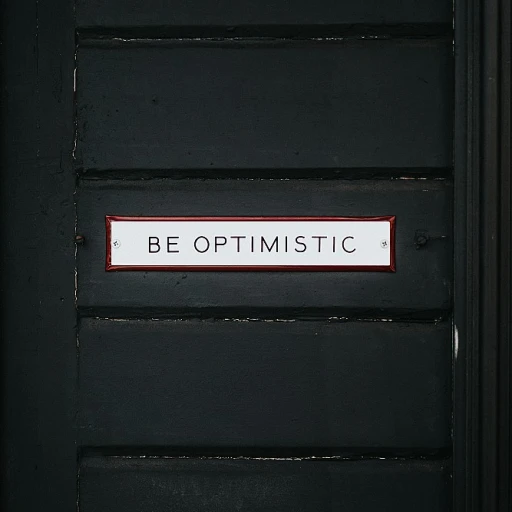The rise of data in HR: benefits and challenges
Data-driven HR strategies shaping the future
In today’s fast-paced business environment, having the right data at your fingertips is like finding a needle in a haystack. This is especially true for Human Resources (HR) departments where data analytics has truly made a mark. In fact, a Deloitte report mentions that 71% of companies see people analytics as a high priority, highlighting its growing importance. But what does this mean for HR professionals? And better yet, what advantages and hurdles does this data-driven approach bring? One key advantage is informed decision making. With data, HR professionals can predict which employees are likely to leave, identify top performers, and develop targeted development plans that keep employees engaged. For example, IBM used predictive analytics to cut attrition by 25%, showing how data can directly impact business outcomes. But, data-driven decisions aren't just about performance management. They impact recruitment too. Companies like Google have utilized data and AI to refine their hiring processes, leading to better outcomes and increased diversity. According to a study by McKinsey, companies with diverse executive teams are 25% more likely to achieve above-average profitability. Clearly, data can give companies a competitive edge. Yet, with all its benefits, data analytics poses distinct challenges. Privacy and data protection represent significant concerns, especially when dealing with sensitive employee information. The European Union's General Data Protection Regulation (GDPR) and U.S. laws such as FMLA necessitate careful handling of HR data to avoid legal repercussions. In fact, a data breach can have serious consequences - a breach costs companies an average of $3.86 million, as estimated by IBM. Furthermore, there's a growing debate around ethical considerations when it comes to data usage. The line between gathering valuable insights and infringing on employee privacy can be thin. Bernard Marr, a renowned tech expert, often emphasizes the need for stringent ethical guidelines to navigate these waters. Without such guidelines, organizations might face trust issues with their employees, damaging morale and engagement. It's clear that while data analytics offers remarkable potential for HR, it's a double-edged sword. Understanding its benefits, being vigilant about privacy, and addressing ethical concerns are pivotal. But when done right, this data-driven approach can revolutionize HR operations. Not to mention, it opens the doors to actively engage employees, drive performance, and build a strong organizational culture. For those curious about deeper aspects of workplace dynamics, it's worth exploring hr analytics trends navigating workplace relationships.Privacy concerns: protecting employee data
Employees' fear of data misuse
As the volume of data collected in HR processes skyrockets, one of the standout issues is the fear among employees about how their data might be used or misused. According to a survey by the Harvard Business Review, 44% of employees are concerned about their employer’s use of their personal data. This anxiety stems from worries about data breaches, unauthorized access, and potential misuse of sensitive information.
High-profile data breaches
Recent history is dotted with high-profile data breaches, which have not only exposed the personal information of millions of individuals but also highlighted the vulnerabilities in data protection. For instance, the Equifax breach in 2017 compromised the personal data of 147 million people. Incidents like this amplify employee fears and underscore the necessity for robust data security measures.
Balancing transparency and control
Transparency in data collection and usage is vital in addressing these concerns. Employees need to be informed about what data is collected, how it is used, and who has access to it. However, providing transparency should not compromise the control employers have over the data. It’s a delicate balance that needs careful consideration and management strategies. According to Bernard Marr, a leading expert in data analytics, transparency and clear communication are key to building trust in data practices.
GDPR and other regulatory frameworks
The General Data Protection Regulation (GDPR) implemented by the European Union has set a high standard for data privacy and protection. Companies are required to ensure that personal data is processed lawfully, transparently, and for a specified purpose. Non-compliance can lead to heavy fines, which urges companies to adhere strictly to these regulations. The U.S. doesn’t have a comprehensive GDPR equivalent yet, but the California Consumer Privacy Act (CCPA) represents a significant step in that direction.
Proactive strategies for data privacy
To protect employee data, HR teams are adopting proactive strategies. These include implementing advanced encryption methods, regularly updating security protocols, and conducting thorough audits to track data access and usage. Data shows that companies investing in these proactive measures see a significant reduction in data breaches and unauthorized access incidences.
The tension between leveraging HR data and ensuring employee privacy is a challenging frontier. However, by understanding and addressing these concerns, HR professionals can navigate this complex landscape, providing value while respecting employee boundaries.
Ethical considerations in HR data usage
Striking the balance: managing the ethics of HR data use
HR's increasing reliance on data analytics opens a myriad of ethical issues. The main concern is how to balance data use with employee privacy. This balance is not just essential for fostering trust but also for ensuring ethical adherence to privacy regulations.
Bernard Marr, an expert in data practices, emphasizes, 'The misuse of HR data can lead to significant breaches of trust between employer and employee.' Indeed, the increased ability for organizations to monitor and scrutinize employee behavior can risk eroding trust if not handled sensitively and transparently.
Another sensitive area includes the usage of predictive analytics for decision-making. While predictive tools can help identify potential employee turnover and improve retention, they also raise questions about fairness and accountability. Misinterpretation or misuse of this type of data could lead to unintended biases or discrimination. For instance, if analytics predict someone is at high risk of leaving, that could unfairly influence performance reviews or promotion opportunities.
The U.S. Equal Employment Opportunity Commission (EEOC) scrutinizes such practices to ensure they do not result in discriminatory outcomes. According to a report by the HR Analytics Maturity Model, companies must engage in regular audits of their data practices to ensure ethical compliance and fairness.
The General Data Protection Regulation (GDPR) in the European Union provides another layer of compliance. This regulation obliges companies to ensure transparency with how data is collected, processed, and stored. Violating rules set by GDPR can result in significant fines, which could cost up to 4% of a company’s annual global turnover.
Moreover, there's a growing ethical debate regarding the use of employee data beyond the workplace. For example, tracking social media activities or using other personal data sources can be seen as a violation of employee privacy. This aspect not only undermines employee trust but also has potential legal repercussions.
Therefore, organizations need to establish clear ethical guidelines and transparent communication channels. One proactive strategy is to involve employees in the creation of these guidelines, ensuring their rights and concerns are addressed. Regular training sessions for HR professionals also ensure they are equipped with the knowledge to manage these evolving ethical challenges.
In summary, managing the ethics of HR data use is a complex but necessary task. The key lies in balancing innovative data practices with stringent ethical standards to protect employee interests and maintain trust. As Bernard Marr aptly put it, 'Ethics in data analytics is not just good practice; it’s good business.'
Impact of data on employee engagement and performance
Impact on organizational productivity
The integration of data analytics in HR has revolutionized how organizations monitor and enhance employee engagement and performance. A study by McKinsey revealed that companies using data-driven HR practices saw a 20% increase in organizational productivity. By leveraging data, HR professionals can identify trends and areas of improvement that directly impact employee output.
Predicting employee turnover
One of the greatest benefits lies in predictive analytics. IBM's research shows that predictive analytics can reduce employee turnover by up to 25%. By analyzing historical data and current performance metrics, organizations can pinpoint employees likely to leave and implement retention strategies proactively. This not only saves recruitment costs but also minimizes the loss of valuable talent.
Performance management techniques
Data analytics aids in designing personalized performance management techniques. Companies like Google have set a precedent by employing data to tailor performance reviews and feedback systems, thus ensuring each employee's growth aligns with the company's goals. A personalized approach to performance management drives better engagement and higher productivity.
Case study: microsoft's success
Microsoft utilized data analytics to understand what motivates its employees. By analyzing workplace behavior and performance data, Microsoft developed the "Microsoft Workplace Analytics", which led to a 12% boost in collaborative time among employees and a 9% reduction in burnout rates. These measures led to significant improvements in both engagement and performance metrics.
Addressing ethical concerns
Despite these advancements, it's crucial to address the ethical considerations surrounding employee data usage. Microsoft, for example, ensures transparency by regularly communicating with employees about how their data is collected and used. This practice fosters trust and boosts morale.
Human resources analytics offers numerous advantages for improving overall workplace efficiency and productivity. Yet, it's equally important to balance these benefits with ethical practices to maintain trust and compliance. The positive impacts on engagement and performance are undeniable, as demonstrated by successful initiatives from leading companies.
Tools and technologies for HR data analytics
The power of predictive analytics in hr
In today's fast-paced business environment, HR departments are increasingly relying on data analytics tools to enhance decision-making processes. Predictive analytics, in particular, plays a pivotal role in HR by identifying potential issues before they become problematic. For instance, IBM's Watson Talent is known for its sophisticated AI capabilities that assist in predicting employee turnover rates, allowing organizations to take proactive measures to retain their top talent
Employee performance management: the shift towards data-driven decisions
According to McKinsey, companies employing data-driven decision-making strategies are 23 times more likely to acquire customers, six times as likely to retain the ones they have, and 19 times as likely to be very profitable. This significant shift towards data-driven performance management allows HR professionals to pinpoint areas where employees excel or need improvement and tailor developmental strategies accordingly
Leveraging people analytics tools for workforce optimization
Various platforms like Oracle and SAP offer comprehensive data analytics tools tailored to HR needs. These tools compile data from different sources to give a clear view of workforce dynamics. Use cases from Southern Hampshire University show that implementing such tools can boost employee satisfaction and reduce turnover by 15%. Tools like these continue to gain traction, proving essential for streamlined and effective management of HR activities.
Ensuring data privacy and ethical considerations
The use of HR data analytics comes with its unique set of challenges, particularly regarding employee privacy. Ensuring compliance with regulations like the General Data Protection Regulation (GDPR) in the European Union and the Family and Medical Leave Act (FMLA) in the U.S. is crucial. Steven Smith, an expert in data protection, notes, "Organizations must prioritize transparent communication with their employees about data collection and usage to build trust and ensure compliance
Measuring employee engagement through data
Employee engagement is another critical aspect where data analytics can offer deep insights. Technologies from companies like Microsoft and Google enable HR departments to monitor engagement levels through various metrics. A recent study by Gallup found that organizations with high employee engagement realize a 21% increase in profitability. These insights are valuable for crafting initiatives that bolster employee morale and drive business success.
Case studies: successful HR data initiatives
Measuring the unseen: real-world examples and data-driven successes
The power of HR data is nowhere more pronounced than in its successful applications. Let's take a look at some concrete examples that highlight the transformative potential of data analytics in human resources.
Google: Decoding employee turnover
One shining example is Google, where the use of people analytics has been a game-changer. The tech giant leveraged data to identify potential reasons for employee turnover. By analyzing various data points—including exit interviews, performance reviews, and employee survey responses—Google identified patterns and potential red flags. In response, they implemented targeted interventions, resulting in a significant reduction in turnover rates. This case shows the effectiveness of proactive strategies and data-driven decision making in tackling employee retention challenges.
IBM: Enhancing employee performance
IBM also provides a stellar example. The company employed predictive analytics to gauge employee performance and engagement. By integrating data from various sources such as work output, peer reviews, and even social media interactions, IBM crafted individualized development plans for employees. This tailored approach skyrocketed their employee engagement metrics, fostering a more motivated and productive workforce.
Southern New Hampshire University: Data to drive inclusive recruitment
In another noteworthy case, Southern New Hampshire University used employee data analytics to create a more inclusive recruitment process. By analyzing data related to applicant pools and hiring practices, they identified unintentional biases and revamped their recruitment policies to promote greater diversity. This initiative not only enriched their workforce but also enhanced overall company culture.
Microsoft: Predictive models for workforce planning
Microsoft has implemented predictive models for workforce planning, aiming to foresee staffing needs and skill requirements. By utilizing these models, the company could efficiently allocate resources and ensure that they were well-prepared for future demands. This proactive strategy has led to more informed decision making and operational efficiency.
Ethical considerations and success strategies
While these success stories underscore the immense potential of data in HR, they also remind us of the ethical considerations that come with it. Strategies HRM recently elaborated on the importance of balancing data collection with employee privacy and ensuring transparency and accountability in data usage. As Bernard Marr, a leading expert in data and analytics, highlights, "Ethics and privacy considerations are not just legal obligations but also foundational to building trust within the workforce."
These examples prove that when handled correctly, employee data can be a powerful tool to enhance operational efficiency, inform decision-making, and boost employee engagement. By learning from these successful HR data initiatives, other organizations can glean valuable insights to craft their own data-driven strategies.
Regulatory compliance: navigating data protection laws
Navigating data protection laws: the compliance maze
When it comes to HR and all that data, compliance with regulation ain't no small potatoes. If your company’s not minding its p's and q's, it could be in a heap of trouble. We're looking at what’s getting a lot of attention these days: data protection laws. The General Data Protection Regulation (GDPR) in the EU is probably the head honcho of privacy regulations. Companies have to ensure they handle employees' data with kid gloves or face severe penalties. GDPR, in effect since May 2018, has reshaped the landscape of data privacy across Europe. According to the European Union, non-compliance can result in fines up to €20 million or 4% of the annual global turnover – whichever is higher (TrustArc survey, 74% of respondents said they are more concerned about their data privacy than ever before. And trust is a biggie. Here’s how compliance can play out in practice. Microsoft and Oracle, two tech behemoths, have put robust measures in place to ensure data protection. These firms have strict access control protocols, data encryption, and regular audits. They also train their employees on data handling and privacy laws. If we take Google as another example, their approach is multi-faceted. From advanced encryption methods to privacy policies, Google’s handling of employee data is meticulous (NVIDIA Annual Report 2020). One study by Bernard Marr on Forbes, pointed out that HR professionals who stay current with compliance regulations have a better chance of fostering a trusting work environment. It can increase employee engagement and even reduce turnover. And for the C-suite, ensuring compliance is critical for informed decision making. It’s not just about policy adherence but about embedding privacy into the company's culture. McKinsey's report on privacy in tech giants emphasizes the importance of seamless data protection in maintaining a competitive edge. Companies must continually assess and update their data protection strategies. The regulatory environment evolves, and so must their compliance efforts. In short, staying on top of regulatory compliance can not only help avoid nasty fines but also foster trust and boost overall business performance.Future trends in HR data analytics
Emerging technologies for HR data analysis
There is a constant emergence of new technologies to enhance HR data analytics. Advancements in machine learning and AI are at the forefront of this evolution, enabling more accurate predictive analytics to forecast everything from employee turnover to performance trends.
A key tool in the current arsenal is people analytics software, which organizations like Google, Microsoft, and IBM have leveraged successfully. These systems analyze comprehensive employee data to provide actionable insights. According to a survey by Deloitte, 71% of companies see people analytics as a high priority, yet only 8% believe they have usable data.
Integration with existing systems
Integrating advanced HR analytics tools with existing systems is crucial. Platforms like Oracle and SAP offer modules specifically designed to incorporate HR metrics seamlessly. This integration aids in real-time data collection, ensuring information stays up-to-date and can be used for informed decision-making. Southern Hampshire University highlights the importance of synchronizing data sources to provide a comprehensive view of workforce trends.
Proactive strategies to mitigate data breaches
As HR departments collect more data, the risk of breaches increases. Companies are now investing in robust data protection strategies. The General Data Protection Regulation (GDPR) in the European Union is a prime example, pushing firms to prioritize data privacy and implement stringent controls. According to a report by Forbes, 59% of companies have experienced at least one significant data breach.
Ethical considerations and data-driven decisions
While the benefits of HR analytics are clear, ethical considerations should not be overlooked. There are challenges surrounding employee privacy and consent in data collection. Bernard Marr, a renowned expert in data analytics, emphasizes the need for transparency and ethical guidelines to foster trust. It's essential to balance data analytics with the rights and dignity of employees.
Looking ahead: the future landscape of HR data analytics
The future of HR data analytics points towards more sophisticated tools and methodologies. Predictive analytics will evolve, offering more nuanced insights. Navigating the balance between technological advancements and ethical data use will be paramount for organizations. SHRM predicts that HR roles will increasingly require proficiency in data analysis, making it a fundamental skill set.












